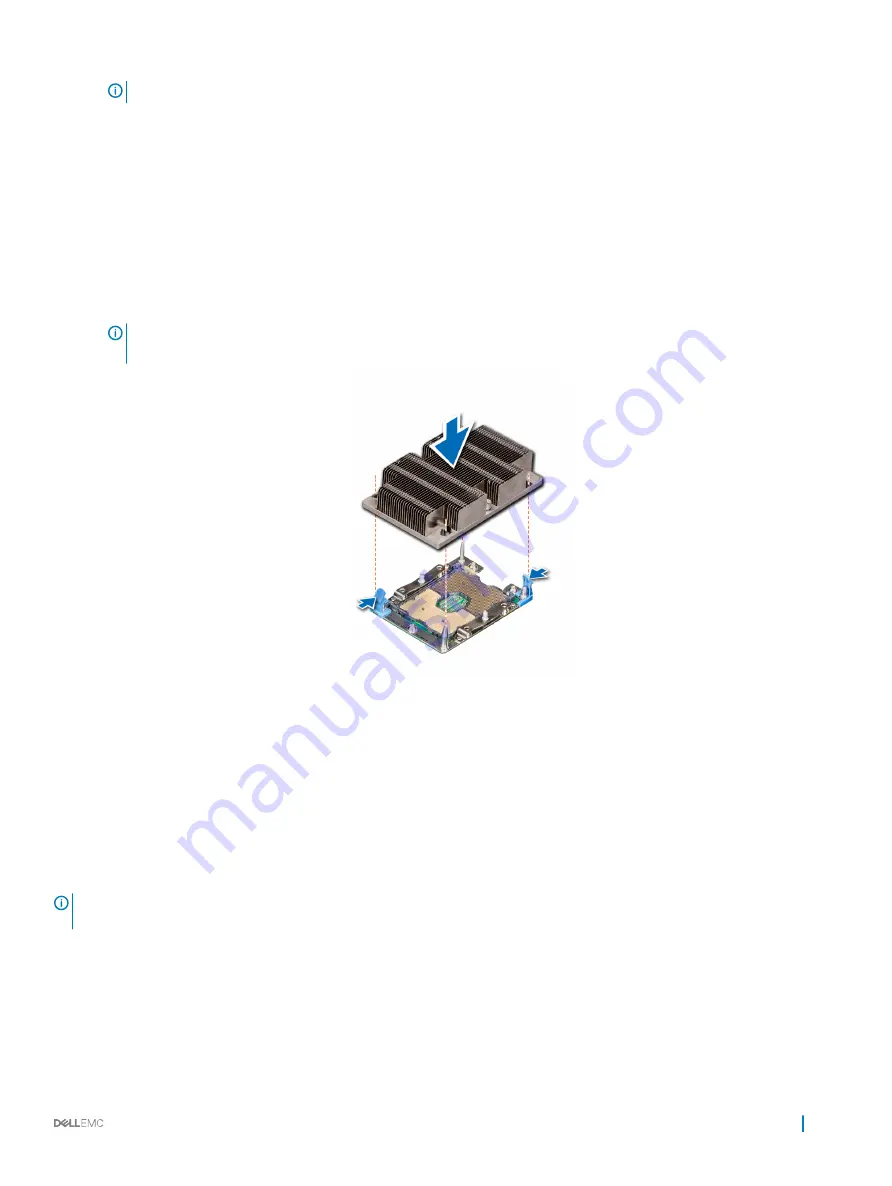
NOTE:
Ensure that the PHM is held parallel to the system board to prevent damaging the components.
2
Push the blue retention clips inward to allow the heat sink to drop into place.
3
Supporting the heat sink with one hand.
4
Using the Torx #T30 screwdriver, tighten the screws on the heat sink in the order below:
a Partially tighten the first screw (approximately 3 turns).
b Tighten the second screw completely.
c Return to the first screw and tighten it completely.
If the PHM slips off the blue retention clips when the screws are partially tightened, follow these steps to secure the PHM:
a
Loosen both the heat sink screws completely.
b
Lower the PHM on to the blue retention clips, follow the procedure described in step 2.
c
Secure the PHM to the system board, follow the procedure described in step 4.
NOTE:
The processor and heat sink module retention screws should not be tightened to more than 0.13 kgf-m (1.35 N.m
or 12 in-lbf).
Figure 49. Installing a processor and heat sink module (1U)
Next step
1
Follow the procedure listed in
After working inside your system
.
Expansion cards and expansion card risers
An expansion card in the system is an add-on card that can be inserted into an expansion slot on the system board or riser card to add
enhanced functionality to the system through the expansion bus.
NOTE:
A System Event Log (SEL) event is logged if an expansion card riser is not supported or missing. It does not prevent your
system from turning on. However, if F1/F2 pause occurs and an error message is displayed.
Removing an expansion card riser
Prerequisites
1
Follow the safety guidelines listed in
2
Follow the procedure listed in
Before working inside your system
.
Installing and removing system components
89






























